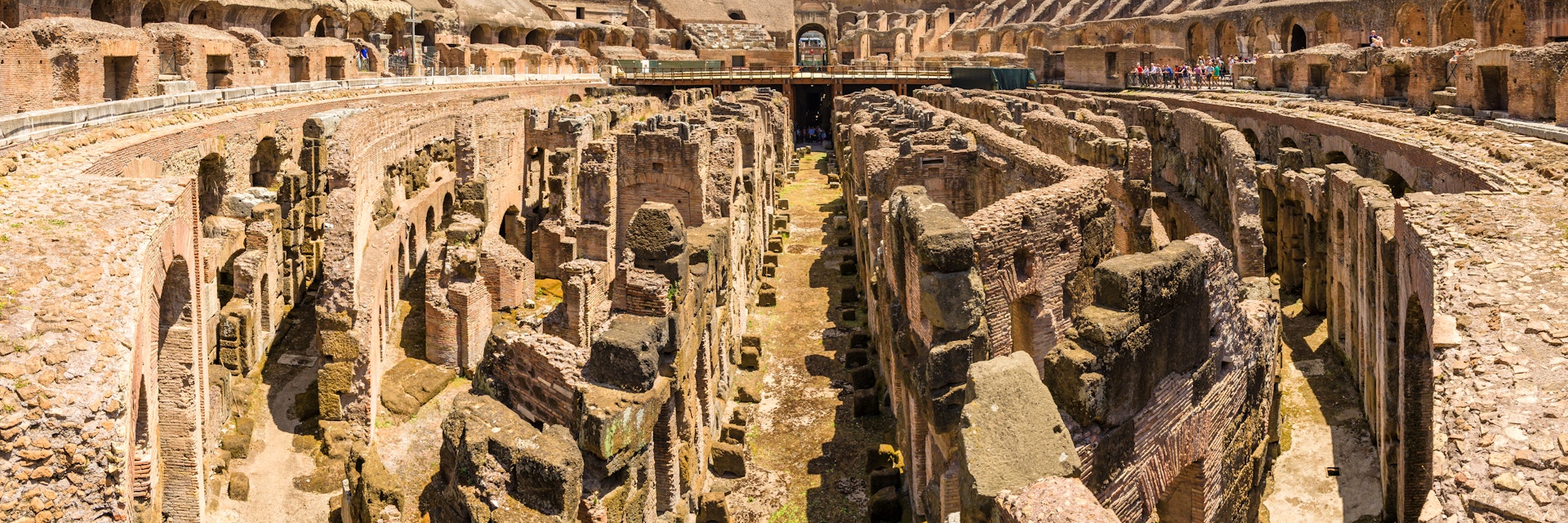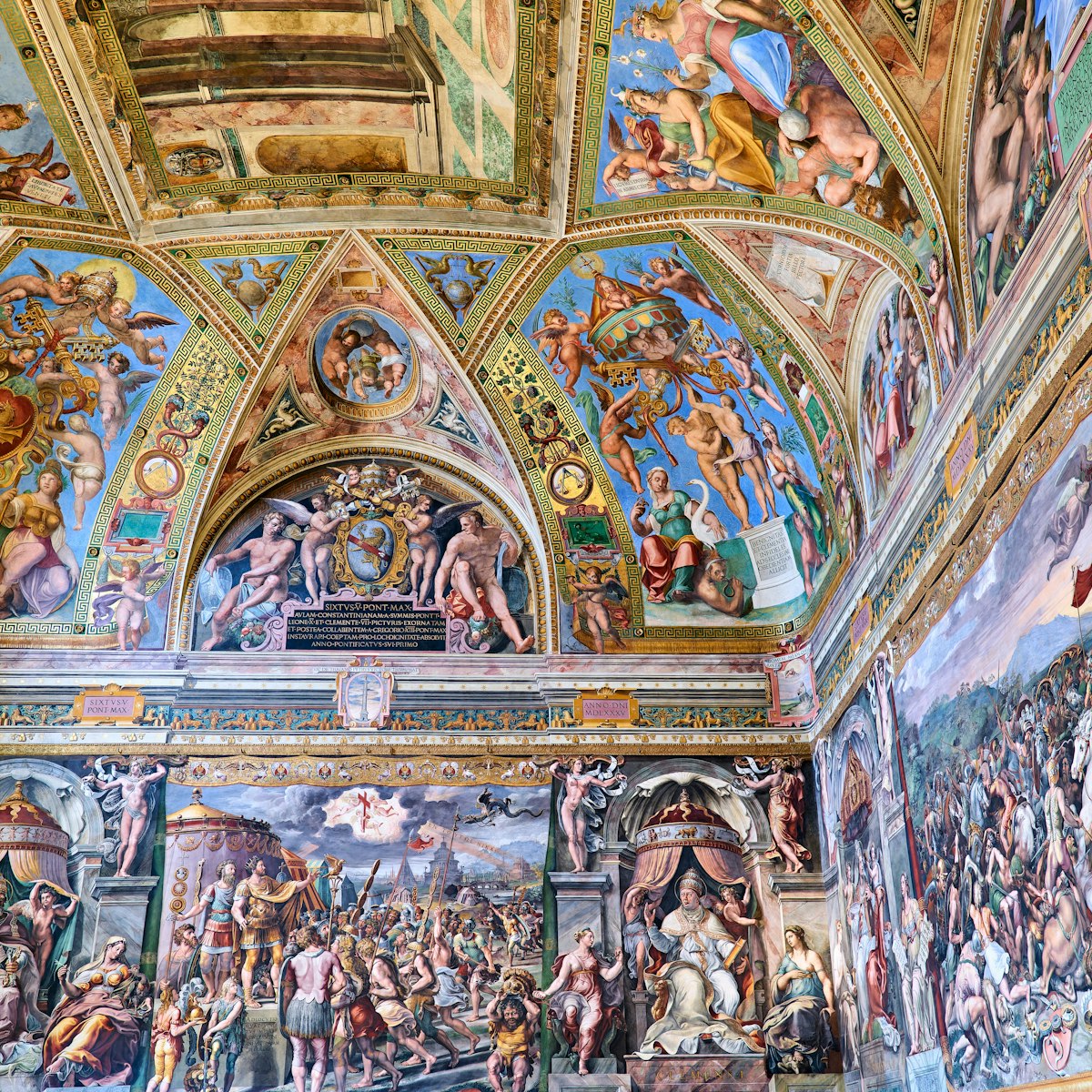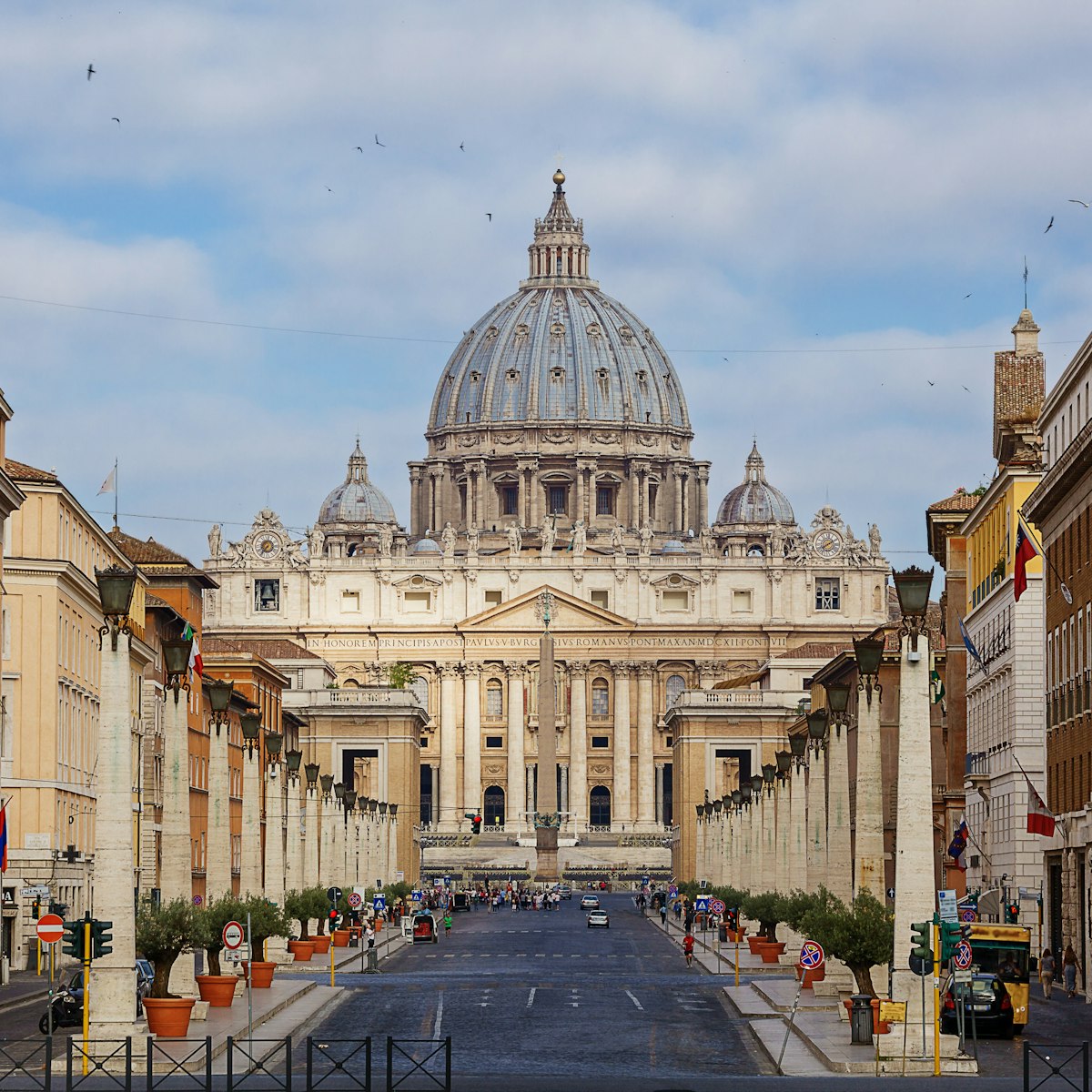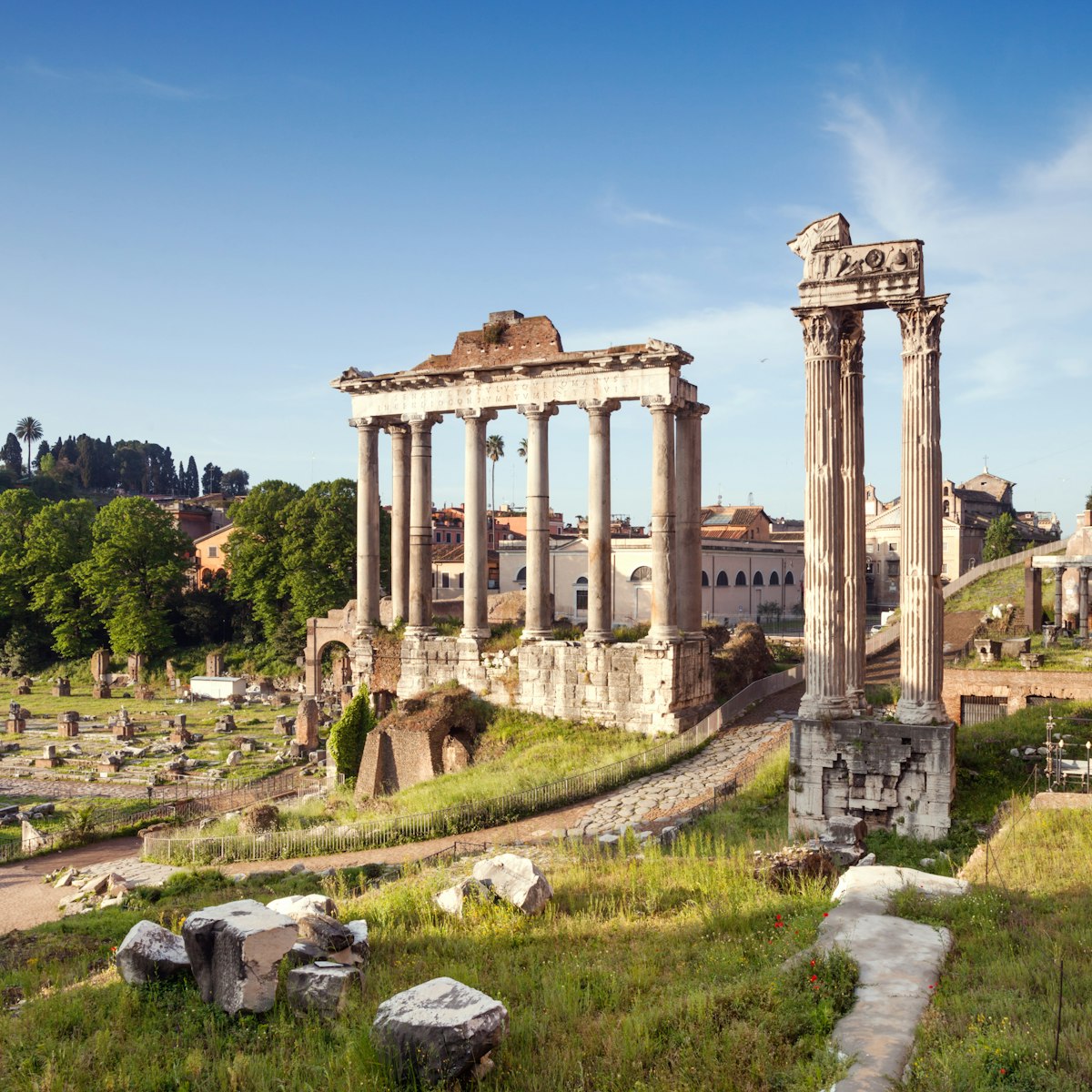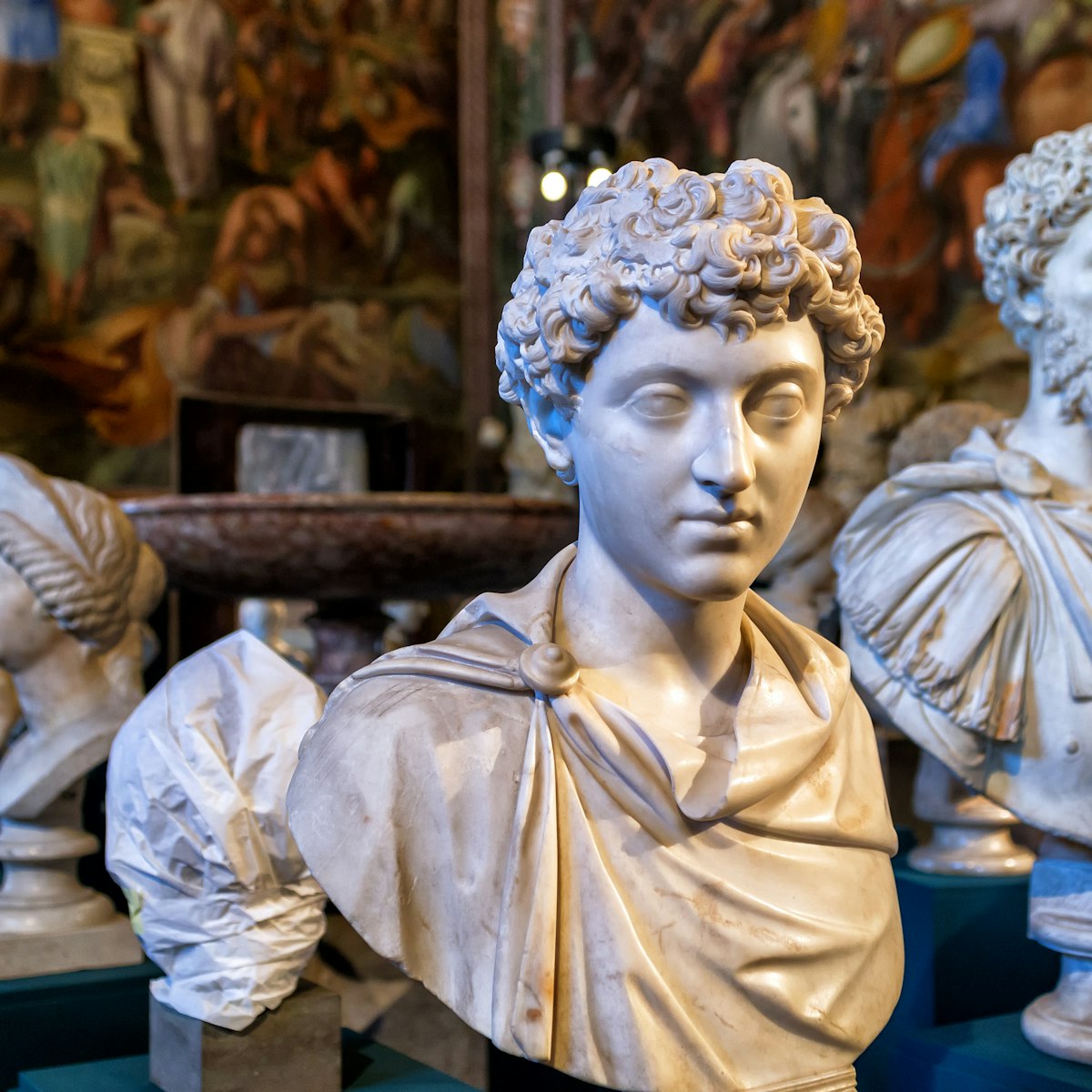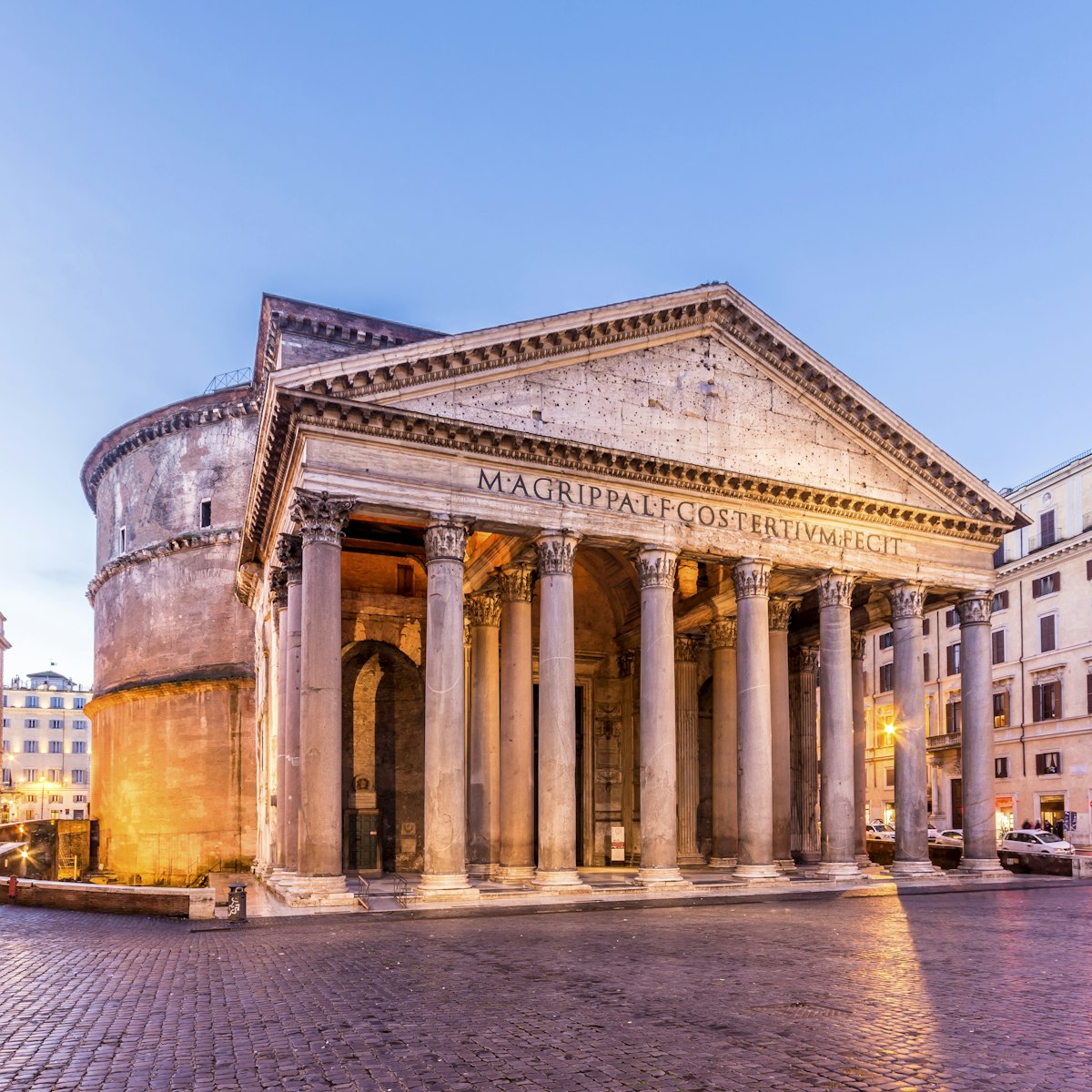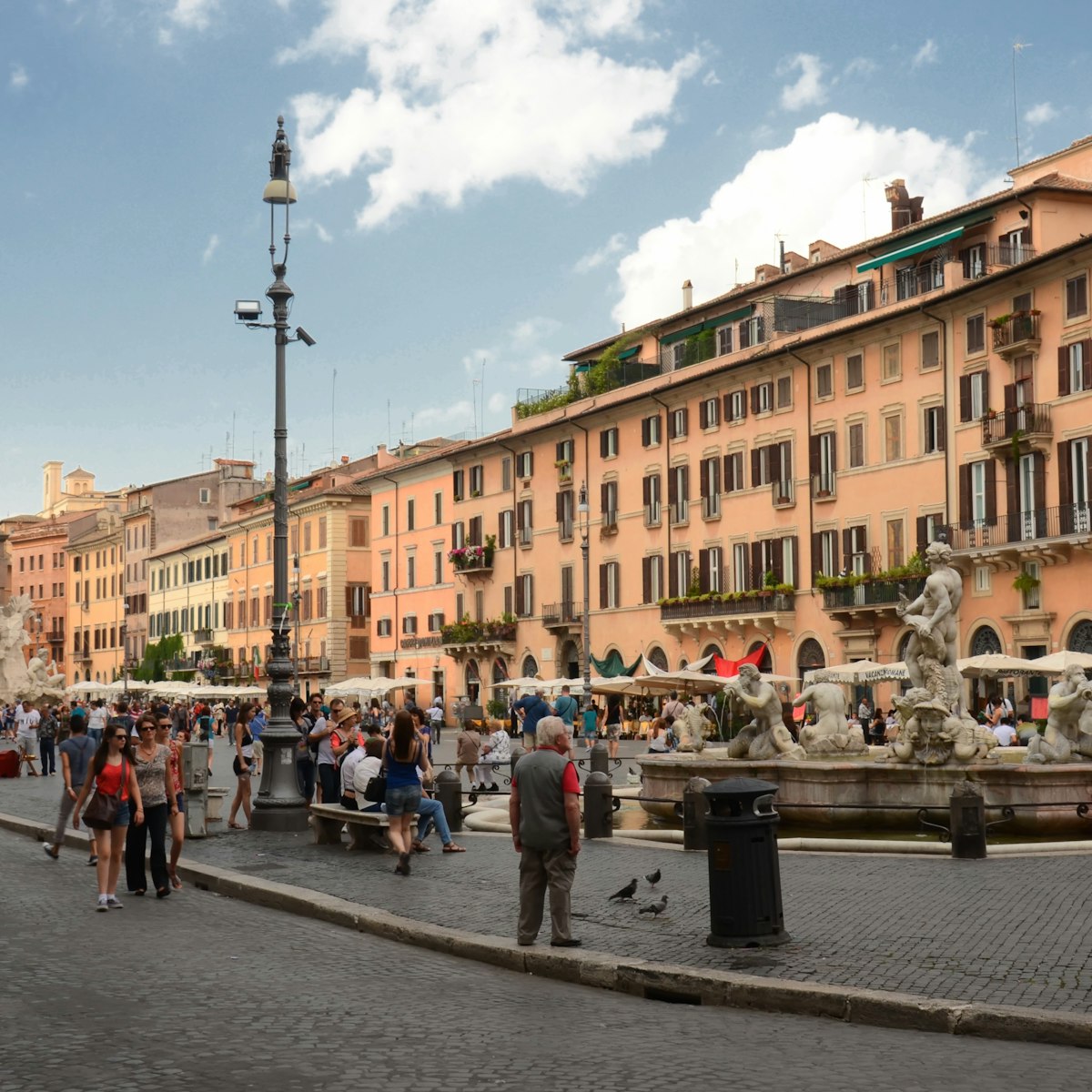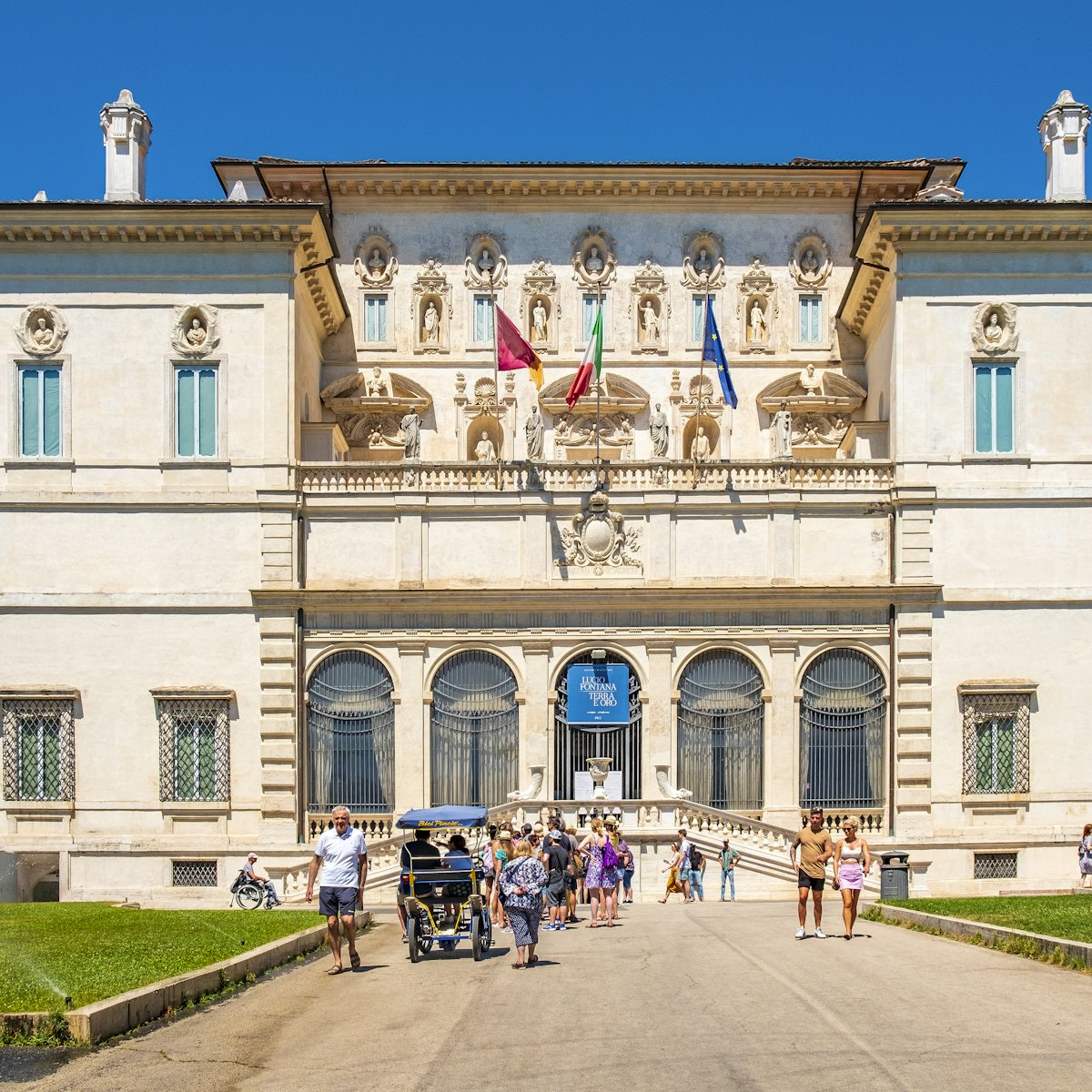An electrifying, spine-tingling sight, the Colosseum is the most thrilling of Rome's ancient monuments. It was here that gladiators met in fierce combat and condemned prisoners fought off wild beasts in front of baying, bloodthirsty crowds.
Two thousand years on and the 50,000-seat stadium is one of Italy's top attractions, drawing more than seven million visitors a year.
History of the Colosseum
The emperor Vespasian originally commissioned the amphitheater in 72 CE. He never lived to see it finished, though, and it was completed by his son and successor Titus in 80 CE. To mark its inauguration, Titus held games that lasted 100 days and nights, during which some 5000 animals were slaughtered.
The stadium was originally named the Anfiteatro Flavio (Flavian Amphitheater) after Vespasian's family name (Flavio), and although it was Rome’s most fearsome venue, it wasn’t the biggest – that was the Circo Massimo. The name Colosseum, which was first coined in medieval times, wasn’t a reference to its size but to the Colosso di Nerone, a giant statue of Nero that stood nearby.
For some five centuries, the amphitheater was used to stage gladiator games and crowd-pleasing spectacles, often to celebrate important anniversaries and military victories. Gladiatorial combat was finally outlawed in the 5th century but animal shows continued until the mid-6th century.
Following the fall of the Roman Empire, the Colosseum was largely abandoned. It was used as a fortress in the 12th century and later plundered of its precious building materials.
More recently, pollution and traffic vibrations have taken a toll. To help counter this, it was given a major clean-up between 2014 and 2016, the first in its 2000-year history. And still today work continues on plans for a new service center and the recreation of the arena’s retractable floor.
What you can see from the outside
Even without entering the amphitheater you can get a good look at it. The outer walls, which top off at 48.5m (159 ft), have three levels of arches, framed by columns topped by capitals of the Ionic, Doric and Corinthian orders. They were originally covered in travertine, and marble statues filled the niches on the 2nd and 3rd stories.
The upper level, punctuated by square window openings and slender Corinthian pilasters, had supports for 240 masts which held a giant awning over the arena.
At ground level, 80 entrance arches, known as vomitoria, allowed the spectators to enter and be seated in a matter of minutes.
Exploring the interior
Once inside, steep steps lead to the first and second tiers from where you can look down onto the partially rebuilt arena floor and the skeletal remains of the underground areas. The second floor also has a small exhibition charting the monument’s history and a viewing balcony overlooking the Arco di Costantino.
The Colosseum's interior was originally divided into three parts: the arena, cavea and podium.
Arena
The arena had a wooden floor covered in sand – harena in Latin, hence the word "arena" – to prevent the combatants from slipping and to soak up spilled blood. Trapdoors led down to underground chambers and passageways beneath the arena floor – the hypogeum.
The hypogeum was the stadium’s backstage area where stage sets were prepared and combatants, both human and animal, would gather before showtime. Gladiators entered from the nearby Ludus Magnus (gladiator school) via an underground corridor, while a second tunnel, the Passaggio di Commodo (Passage of Commodus), allowed the emperor to arrive without having to pass through the crowds.
To hoist people, animals and scenery up to the arena, there was a sophisticated network of 80 winch-operated lifts, all controlled by a single pulley system.
Cavea and podium
The cavea, for spectator seating, was divided along social lines with senior officials sitting in the lowest tiers, wealthy citizens in the middle, and plebs in the highest sectors. Women (except for the Vestal Virgins) were relegated to the cheapest sections at the top. Tickets were numbered and spectators were assigned a precise seat in a specific sector – in 2015, restorers uncovered traces of red numerals on the arches, indicating how the sectors were numbered.
The podium, a broad terrace in front of the tiers of seats, was reserved for emperors, senators and VIPs.
Tickets and practicalities
You can buy tickets at the ticket office on Piazza del Colosseo (credit/debit cards only) but unless you enjoy queuing it makes more sense to get them online (plus €2 booking fee). Demand is always high so book well ahead, even months in advance for peak periods.
Standard tickets (€16) are valid for one day and cover entrance to the Colosseum (at a set time) and to the Roman Forum and Palatino (no set time). They do not cover admission to the arena floor or underground sectors. To access these you’ll need a two-day Full Experience Underground and Arena ticket (€22).
Guided tours are also available to book online, including a basic hour-long visit (€23) with an archaeologist guide.
In summer 2023, a new panoramic glass elevator was inaugurated at the site, offering a new viewing experience for special early morning visits.
The Colosseum is open from 9am to one hour before sunset. To get there, take metro line B to Colosseo or a bus to Via dei Fori Imperiali.
Visitor tips
Reckon on spending about an hour at the Colosseum...once you’ve made it inside. To avoid the worst of the congestion outside, try to visit first thing in the morning or late in the afternoon when it’s cooler and the light’s better for photos.
For information about the site, the free-to-download PArCo app provides historical background and useful practical information.
Places to eat nearby
Avoid the rip-off restaurants in the immediate vicinity. Instead, push on to the area east of the Colosseum for a filling meal at Divin Ostilia, a snug wine bar with a menu of classic city staples.
Alternatively, head over to the Circo Massimo where Osteria Circo cooks up winning Roman pastas.
